Amundsen-Scott South Pole Station.
Temperature: minus 37.7 C = minus 25.7 F
Windchill: minus 43.7 C, m = minus 46.6 F
Winds: 8 kns
Weather: Clear and sunny
Answer to yesterday’s question: at high altitude the air contains less oxygen. That puts a lot of stress on the body. This elevation has great physiological consequences: oxygen in the blood is suddenly at lower concentration equal to a person who has smoked a pack of cigarettes for 40 years. Over time, the body produces more blood cells to compensate for the missing oxygen in the air. At South Pole, the change of barometric pressure makes it feel to be even higher than the actual elevation. So, it is important to take it easy.
However, we were able to start our project on ozone concentration.
We will study :
the ozone profile concentration up to about 35 km the surface ozone up to 1km
We started the second project until Bryan Johnson has to leave the station.
This project required the use of a snowmobile so we completed a short snow mobile training in the morning.
Andy , Amy , Patrick, Bryan, and Elke are listening to David's instructions in how to use the snow mobile around the station at 45 below F or 43 below C
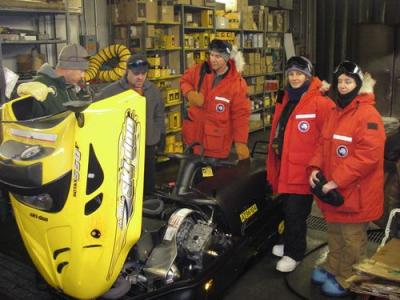
This project tests the phenomena of elevated ozone concentration in the troposphere up to 1000 meters to study the photochemical action between sun and the snow. This requires developing a new method that allows us to retrieve the instrument via a snow mobile and GPS.
First we let go of an orange sealing hight balloon for testing the wind direction
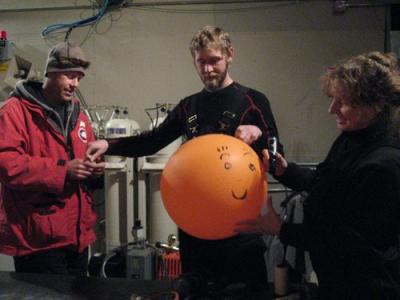
The balloon is not only smaller but also bright pink!
With help of an air pressure device that is set to a certain elevation, at a certain height, a battery will start sending a current across the string and will burn and cut it. The balloon is separated and the ozone instrument will return to the surface via a parachute.
Andy and Patrick are filling the surface ozone balloon
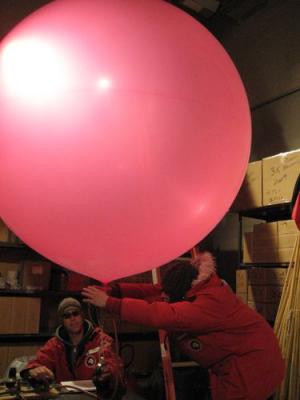
In the morning we had a short briefing about our project with the NSF representative Al Baker. Many departments need to know what we are doing since the balloon might land in an area that is restricted.
In the afternoon we had our first trial after we checked with the communication department about flight . We also receive radios.
Bryan lets go of the balloon
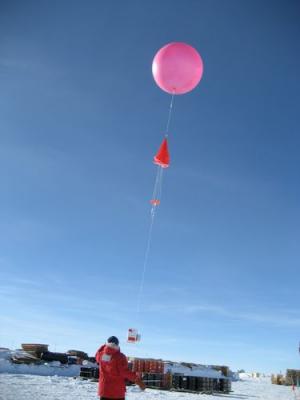
All went well at the end. However, first the snowmobile broke and we got quickly a second one. Then Andy and Patrick, the two NOAA science technicians went after the ozone device but it landed too far in a restricted seismology area. They returned, got permission to go and found the ozone sonde. Great Job Andy and Patrick!! I gave chocolates to all team members
Patrick and Andy went out to retrieve the instrument
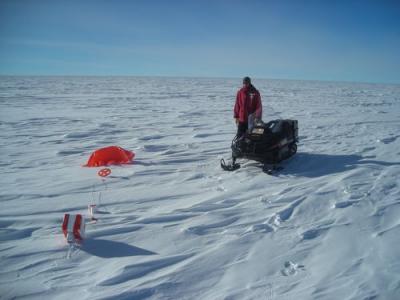
Question: How can we make certain that the ozone sonde gets separated at a certain elevation?

